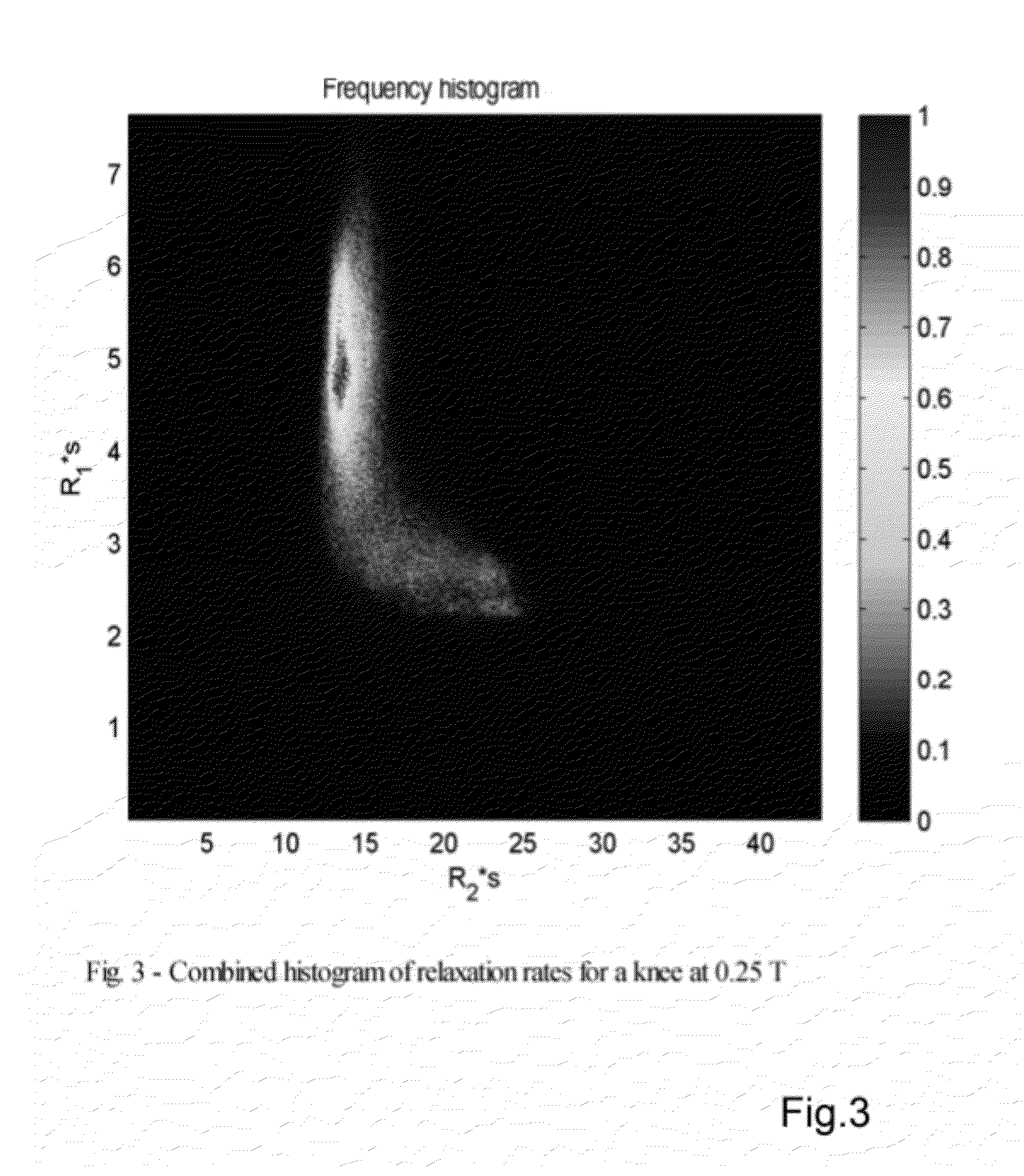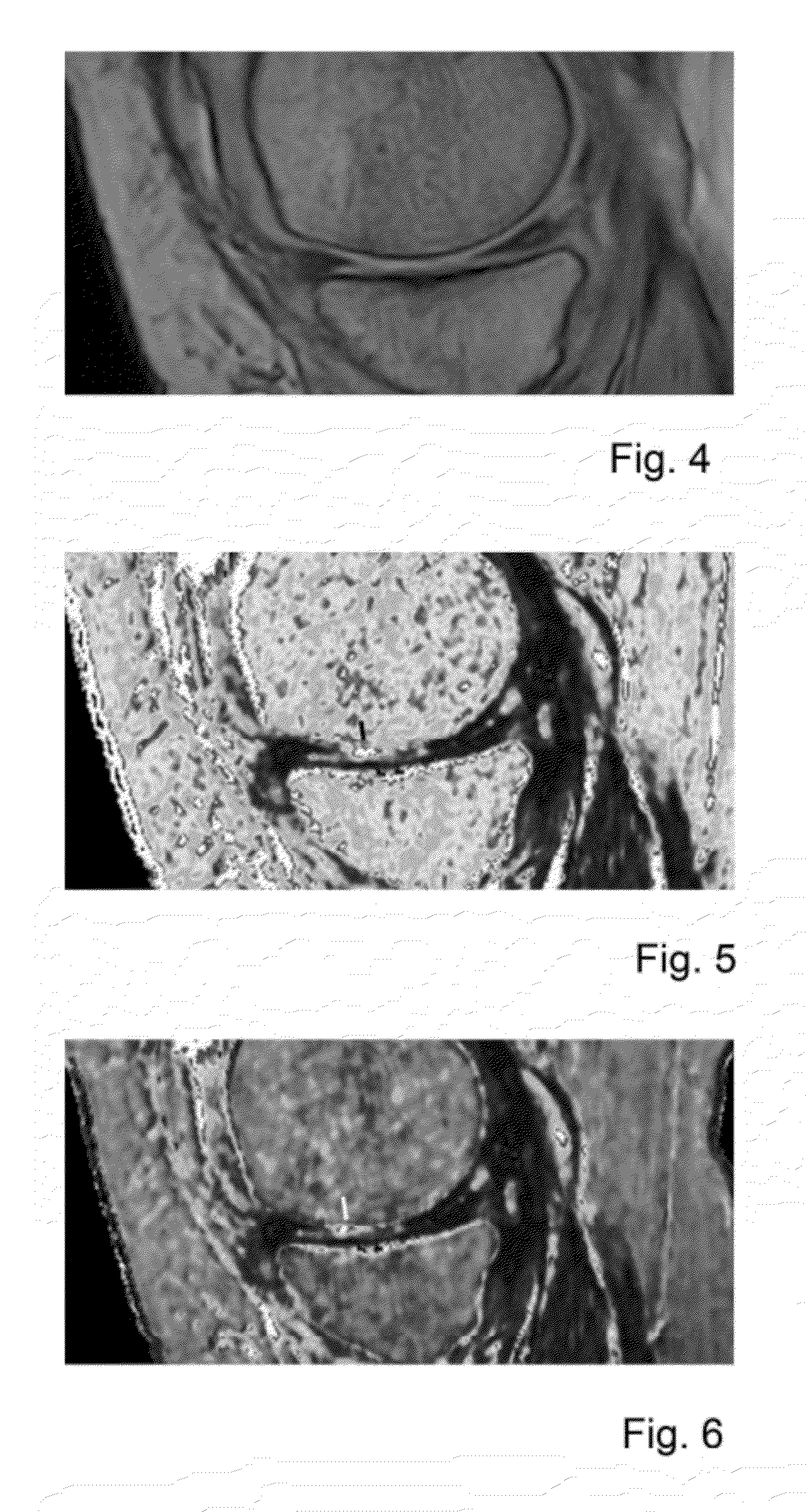Method of generating 2D or 3D maps of MRI T1 and T2 relaxation times
- Summary
- Abstract
- Description
- Claims
- Application Information
AI Technical Summary
Benefits of technology
Problems solved by technology
Method used
Image
Examples
Embodiment Construction
[0041]Referring to a method according to the present invention, the T1 and T2 maps are obtained by acquiring 2D or 3D MRI signals using two sequences only.
[0042]The sequences that are used to generate relaxometry maps are steady-state 3D gradient-echo sequences. This will combine the typical advantages of 3D imaging sequences, i.e. speed, resolution and signal-to-noise ratio SNR with simple calibration of the system, which is a feature of the relaxometry method as disclosed herein.
[0043]The first of the two sequences that are used in the method of the present invention is a so-called SSFP-FID sequence (see references above).
[0044]Assuming a SSFP-FID sequence (Steady-State Free-Precession Free Induction Decay—FIG. 1) with a repetition time TR1, an echo time TE0 and a flip angle α, the equation that describes the signal corresponding to 0-order unbalanced steady-state coherent magnetization is (Sobol W T & Gauntt D M, “On the Stationary States in Gradient Echo Imaging,” J. Magn. Reson...
PUM
 Login to View More
Login to View More Abstract
Description
Claims
Application Information
 Login to View More
Login to View More - R&D
- Intellectual Property
- Life Sciences
- Materials
- Tech Scout
- Unparalleled Data Quality
- Higher Quality Content
- 60% Fewer Hallucinations
Browse by: Latest US Patents, China's latest patents, Technical Efficacy Thesaurus, Application Domain, Technology Topic, Popular Technical Reports.
© 2025 PatSnap. All rights reserved.Legal|Privacy policy|Modern Slavery Act Transparency Statement|Sitemap|About US| Contact US: help@patsnap.com



